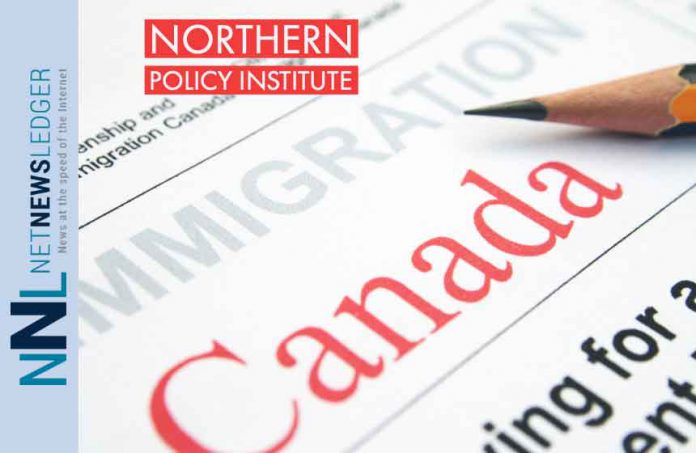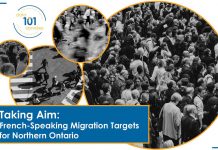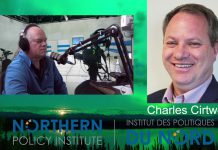THUNDER BAY – OPINION – Over the past three years, I have watched a consensus build among northern Ontarians in support of a regional approach to immigration. A nuanced, mutually supportive, evidence-driven, needs-based approach. In the last two weeks, I have watched the very same people, who worked so hard to build that consensus, turn on each other. Fighting over what should only be the first piece of a much bigger pie.
It does not have to be this way. Consider what we have, collectively, accomplished on the immigration file. The mayors of our five largest communities have publicly and jointly called for an immigration policy that works for Ontario’s northern regions. The five largest urban economic development agencies have coordinated their investments to identify ways to, cooperatively, move forward.
The Northwestern Ontario Municipal Association and the Federation of Northern Ontario Municipalities held emergency meetings within days of the launch of the new federal Rural and Northern Immigration Pilot. Passing resolutions in support of regional efforts to maximize the return to Northern Ontario from this new program. Workforce planning boards, settlement associations, local immigration partnerships, economic development agencies, individual municipalities, grassroots organizations, universities and colleges have all stood shoulder to shoulder in support of a common approach. And it has worked.
The federal Rural and Northern Immigration Pilot breaks down the barriers keeping Northern Ontario from using the express entry stream to fill the jobs we have, as opposed to the jobs those in Ottawa and Toronto wish we had. FedNor has committed resources in its new regional plan to make northern communities more welcoming. The Ontario government is increasingly aware, and speaking publicly, about the immigration challenges in Ontario’s northern regions.
Now is not the time to abandon the progress we have made. Studies by the Conference Board of Canada, the Université de Hearst, and Northern Policy Institute have all demonstrated the absolute necessity for a regional approach to immigration in Northern Ontario. Settlement and attraction services are already structured and delivered on a regional basis.
In terms of this federal pilot, we can and should submit five mutually supporting and complementary bids. One each for Algoma District, Nipissing District, Cochrane District, Greater Sudbury and the Sudbury District, and Thunder Bay District. Alternatively, we could do five bids from our largest communities and their immediate suburbs, but five bids it should be. The federal government is not obligated to choose only one of those bids. It can choose all five, and the evidence suggests it should.
There is no hard cap on the number of community bids to be approved. There is also no constraint on the bidders talking to and working with each other. Northern MPs could, and should, support and endorse all five bids. Recall that those MPs now include not only a senior Minister but a Parliamentary Secretary responsible for rural growth.
We should not, however, be unreasonable in our proposals. There is a hard cap of 2750 “principal applicants” nation-wide under this new program. The five bids from Northern Ontario, combined, should not exceed 20% of that total. We can easily divide 550 spots among the five bids. The five targets can be justified using any number of measures: job postings last year, population, or future demographic trends. If you are curious, no matter which criteria you use, the division of 550 spots ends up being roughly: Algoma, 60 principal applicants; Nipissing, 80; Cochrane, 80; Thunder Bay, 140; and Sudbury, 190.
Our efforts, of course, cannot leave out Kenora and the myriad smaller communities not directly linked into one of the Big Five. On that front, we have a real opportunity on the provincial side to make parallel changes to those just announced by the federal government. The Ontario Immigrant Nominee Program was expanded in 2018 by 600 new spots. Two small policy changes and the province could easily create the same opportunity in our smaller communities as the new federal pilot would for our larger ones.
The province could allocate those 600 new spots to Northern Ontario communities under 20,000 in population while expanding the list of “in demand jobs” to include skilled and semi-skilled jobs in the north like truck drivers, personal support workers and hospitality staff. Recall that, on the provincial side, Northern Ontario’s MPPs include not only many skilled and long-serving legislators but two senior Ministers and a Parliamentary Assistant dedicated to northern development.
Combined, we would have 550 federal express entry spots divided among our “big five” and 600 provincial express entry spots shared among the rest of the north. Northern communities supporting each other to make these newcomers and their families successful and welcome. This plan is achievable and consistent with what Ontario’s northern regions have been working towards, collectively, for the last several years. Standing together, we can do this.
Charles Cirtwill is President and CEO of Northern Policy Institute. An independent social and economic think tank based in Northern Ontario with offices in Thunder Bay and Sudbury.







